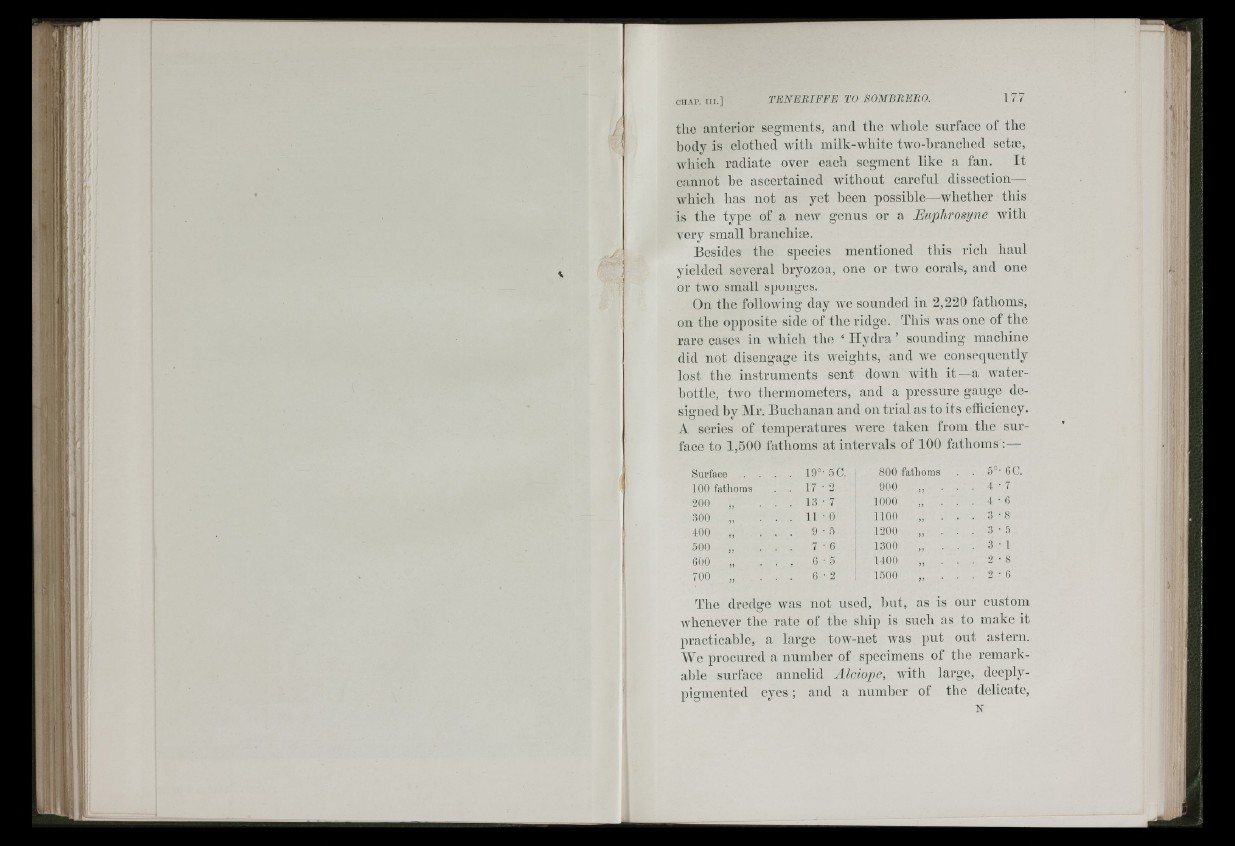
’ >
i i
I*
the anterior segments, and the AAdiole surface of the
body is clothed with milk-Avhite tAVo-hrauched setae,
AAdiich radiate over each segment like a fan. It
cannot he ascertained A\dthout careful dissection—
Avhich has not as yet heen possible—wffiether tliis
is the type of a uoav genus or a E u p l i r o s y n e AAuth
very small branchiae.
Besides the species mentioned this rich haul
yielded several hryozoa, one or two corals, and one
or two small sponges.
On the folloAving day Ave sounded in 2,220 fathoms,
on the opposite side of the ridge. This Avas one of the
rare cases in AAdiich the ‘ Hydra ’ sounding machine
did not disengage its AA'eights, and aa'c consequently
lost the instruments sent down Avith i t —a water-
bottle, tAvo tliermometers, and a pressure gauge designed
by Mr. Buchanan and on trial as to its efficiency.
A series of temperatures Avere taken from the surface
to 1,500 fathoms at intervals of 100 fathoms :—■
Surface . 19°- 5 0. : 800 fathoms . . 5°- 60.
100 fathoms . 1 7 - 2 900 > ? • . . 4 - 7
200 „ . 1 3 - 7 1000 /•) . . 4 - 6
300 „ . 1 1 - 0 1100 5) . . 3 - 8
400 ,, . 9 ■ 5 1200 >) . . 3 - 5
500 „ 7 ■ 6 1300 ) J . . 3 - 1
600 „ . 6 • 5 1400 5) . . 2 - 8
700 „ 6 • 2 1500 . . 2 • 6
The dredge Avas not used,, hut. as is our custom
practicable, a large toAA^-net was put out astern.
W e procured a number of specimens of the remarkable
surface annelid Alciope, Avith large, deeply-
pigniented ey e s; and a number of the delicate,
N
U'